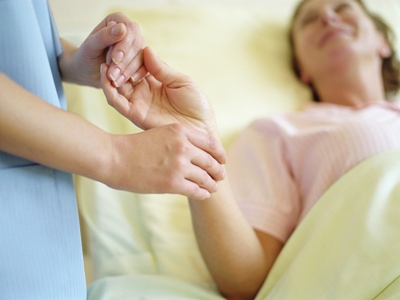
The Nurse’s Role in HCAHPS
When the HCAHPS (Hospital Consumer Assessment of Healthcare Providers and Systems) survey entered our world in October of 2006, few understood the breadth of the impact it would have on nursing care. Since July 2007, hospitals associated with the Inpatient Prospective Payment System (IPPS) had to collect and report HCAHPS data in order to receive their full IPPS annual payment. In 2010, the Affordable Care Act (ACA) introduced the Value-Based Purchasing program which included HCAPHS performance as part of the incentive payment calculations (HCAHPS, n.d.). The HCAHPS survey encompasses nine key topics which contain 21 patient perspectives on care, totaling 27 questions in length (HCAHPS, n.d.). Of those nine key survey topics, nursing care directly impacts seven.
So what exactly is our role as nurses and how do we engage patients to exceed their expectations during a hospitalization?
Patient-centered care is not a new concept in nursing. In fact, Florence Nightingale (1992) first described this in her nursing model which placed the patient at the forefront, starting a relationship exists between the patient’s health, their surroundings, and the skills of the nurse providing care. In short, patients are likely to recover quickly if placed in a healthy environment and receive high-quality nursing care. More than 150 years later this model still holds strong and is regularly supported by new empirical evidence.
Communicate
Maximize the power of the ‘whiteboard’ in the patient’s room. Empower your patient by keeping them informed on their plan of care, daily goals, and progress (Singh, et. al, 2010). Speak to the patient in a way they can understand and don’t rush out of the room; allow time for processing. Provide the patient with a means to write down questions they may have and encourage them to voice their concerns.
Educate
Seize every opportunity to involve your patient in their care. Talk with them about their condition, and discuss their goals and the goals of the care team. Employ the teach-back method when administering medications to ensure the patient understands what they are taking, why, and potential side effects (Brown, 2015). Always anticipate discharge by asking yourself “what does the patient and their loved ones need to know to successfully keep them out of the hospital?” Advocate for the patient early on in their stay and continue to keep the patient informed so they don’t feel rushed or unprepared at discharge (Kennedy, Craig, Wetsel, Reimels, & Wright, 2013).
Respect
Create a quiet, healing environment where the patient can rest. It’s easy to get wrapped up in a task list that demands attention; simply be aware of your posture and demeanor when you enter the patient’s room. If you’re rushed, agitated, or apathetic, patients will notice (Angel, 2016). Place yourself in the patient’s situation, and take a moment to empathize with what they are experiencing. Provide care in a way in which you would want to receive it if you were lying in the bed. Most importantly, take time to really listen to your patient and their loved ones, intentionally looking them in the eyes. Not only will this help ease their fears; but mutual trust is also established.
In summary, nurses play an integral role in providing patients with exceptional care that translates to “Very Good” HCAHPS data. Florence continues to speak to us today through patient-centered care models which serve as a reminder as to why we chose the nursing profession to begin with. Through intentional communication, comprehensive education, and respect, we can deliver exceptional care that we can feel proud of. It’s likely you’re doing much of this already, but you are encouraged to make a genuine attempt to implement one new notion into your daily practice and see what happens.




